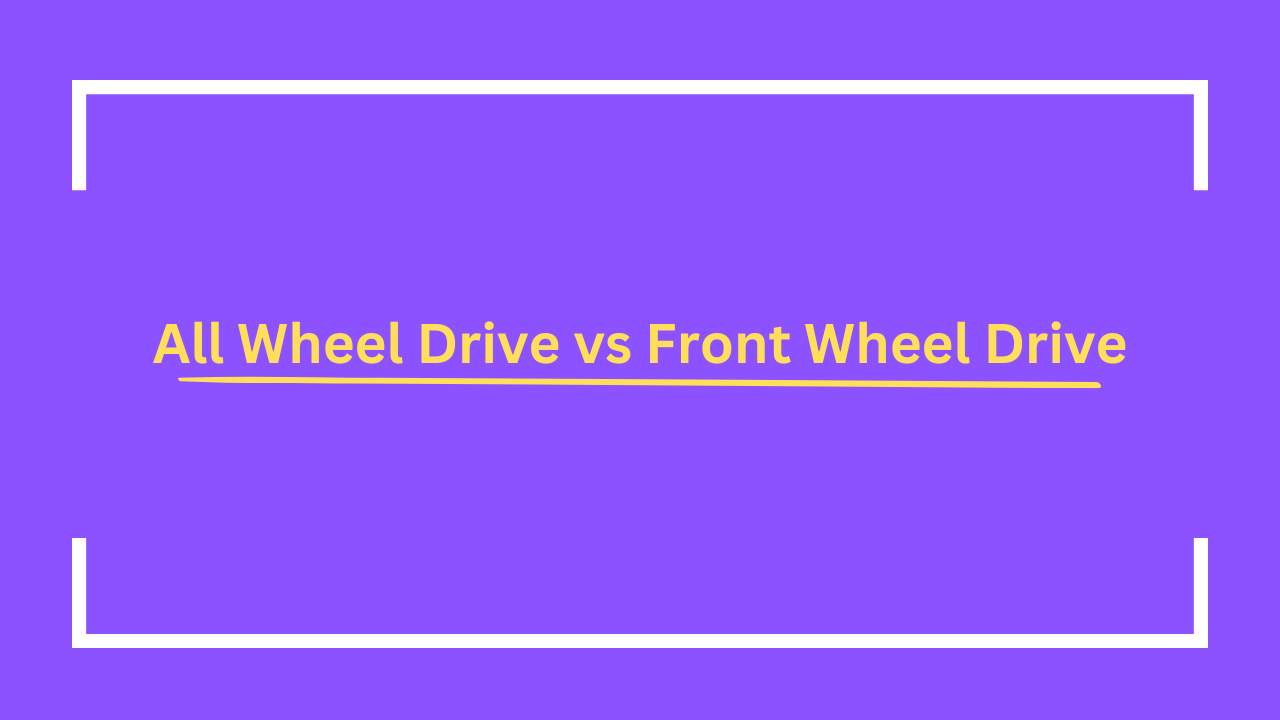All Wheel Drive vs Front Wheel Drive
Choosing the right drivetrain system for your vehicle can significantly impact your driving experience. Two popular options are All Wheel Drive (AWD) and Front Wheel Drive (FWD). This article will delve into the key differences, advantages, and disadvantages of each system, helping you decide which is best for your needs.
What Is All Wheel Drive (AWD)?
All Wheel Drive (AWD) is a drivetrain system that distributes power to all four wheels of a vehicle simultaneously. This system enhances traction and stability, making it ideal for various driving conditions, including rain, snow, and off-road terrain.
Key Features of AWD:
- Power Distribution: Automatically adjusts power between front and rear wheels as needed.
- Enhanced Traction: Provides better grip on slippery or uneven surfaces.
- Improved Handling: Offers better stability during cornering and adverse weather conditions.
What Is Front Wheel Drive (FWD)?
Front Wheel Drive (FWD) is a drivetrain system where power is sent exclusively to the front wheels of a vehicle. This system is common in many cars due to its simplicity and cost-effectiveness.
Key Features of FWD:
- Cost-Effective: Generally cheaper to manufacture and maintain than AWD systems.
- Fuel Efficiency: Tends to be more fuel-efficient due to lighter weight and better aerodynamics.
- Space Efficient: Allows for more cabin and cargo space since the drivetrain is concentrated in the front.
All Wheel Drive vs Front Wheel Drive: Key Differences
When comparing AWD and FWD, several factors come into play, including performance, handling, and overall driving experience. Here’s a breakdown of the main differences:
| Feature | All Wheel Drive (AWD) | Front Wheel Drive (FWD) |
|---|---|---|
| Power Distribution | All four wheels | Front wheels only |
| Traction | Superior traction in adverse conditions | Good for normal driving conditions |
| Cost | Typically more expensive | Generally more affordable |
| Fuel Efficiency | Usually less fuel-efficient | Generally more fuel-efficient |
| Maintenance | Higher maintenance costs | Lower maintenance costs |
Advantages of All Wheel Drive
- Better Traction: AWD systems provide enhanced traction on slippery or uneven surfaces, making them ideal for areas with heavy rainfall or snow.
- Versatility: AWD vehicles can handle a variety of terrains, making them suitable for both urban and off-road driving.
- Improved Safety: Enhanced stability and traction contribute to safer driving in adverse weather conditions.
Advantages of Front Wheel Drive
- Cost-Effective: FWD vehicles are generally less expensive to manufacture, which can lower the overall cost for consumers.
- Fuel Efficiency: FWD systems are typically lighter and more fuel-efficient, making them a good choice for daily commuting.
- Easy Handling: FWD vehicles tend to be easier to handle, especially for less experienced drivers.
Disadvantages of All Wheel Drive
- Higher Costs: AWD systems can be more expensive to purchase and maintain due to their complexity.
- Lower Fuel Efficiency: The added weight of an AWD system can reduce fuel efficiency compared to FWD systems.
Disadvantages of Front Wheel Drive
- Limited Traction: FWD vehicles may struggle in extreme weather conditions or on off-road terrain.
- Understeering: FWD vehicles can exhibit understeering, where the front wheels lose traction during aggressive cornering.
Which System Is Right for You?
Deciding between All Wheel Drive and Front Wheel Drive depends on your driving needs and preferences:
- If you live in an area with harsh weather conditions or frequently drive off-road, AWD may be the best choice for you.
- If you’re looking for a budget-friendly, fuel-efficient vehicle primarily for city driving, FWD could be the better option.
Consider your driving habits, local climate, and budget when making your decision.
FAQs
1. Is AWD better than FWD?
It depends on your needs. AWD offers better traction and handling in adverse conditions, while FWD is generally more affordable and fuel-efficient.
2. Can I switch between AWD and FWD?
Some vehicles offer selectable drive modes, allowing you to switch between AWD and FWD. Always refer to your vehicle’s manual for specifics.
3. Are AWD vehicles more expensive to insure?
AWD vehicles may have higher insurance rates due to their increased capabilities and potential for off-road use.
4. Do FWD vehicles perform well in snow?
FWD vehicles can perform adequately in light snow but may struggle in heavy snow or icy conditions compared to AWD vehicles.
5. Can I drive an AWD vehicle in the summer?
Yes, AWD vehicles can be driven in summer conditions, but it’s important to ensure they are equipped with the right tires for optimal performance.
6. Is maintenance for AWD vehicles more complex?
Yes, AWD systems can require more maintenance due to their complexity compared to FWD systems.
7. Are all SUVs equipped with AWD?
Not all SUVs come with AWD; some are available with FWD. It’s essential to check the specifications of each model.
Conclusion
Understanding the differences between All Wheel Drive (AWD) and Front Wheel Drive (FWD) is essential for making an informed decision when purchasing a vehicle. AWD offers enhanced traction and versatility, making it ideal for adverse weather and off-road conditions.
On the other hand, FWD provides a more budget-friendly option with better fuel efficiency for everyday driving. Evaluate your driving habits, budget, and local conditions to choose the system that best suits your needs. Whichever you choose, knowing the strengths and weaknesses of each drivetrain can lead to a more satisfying driving experience.


